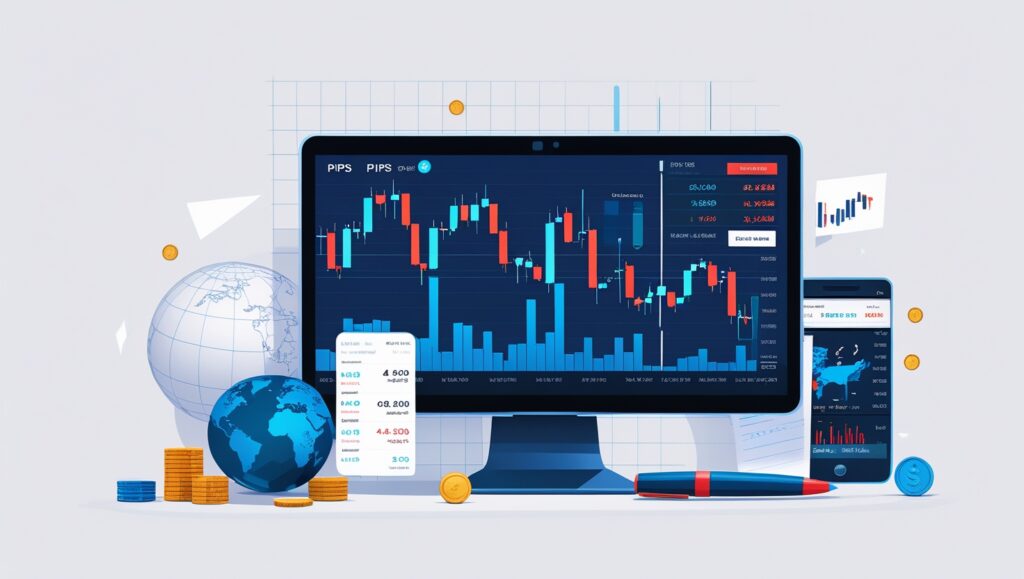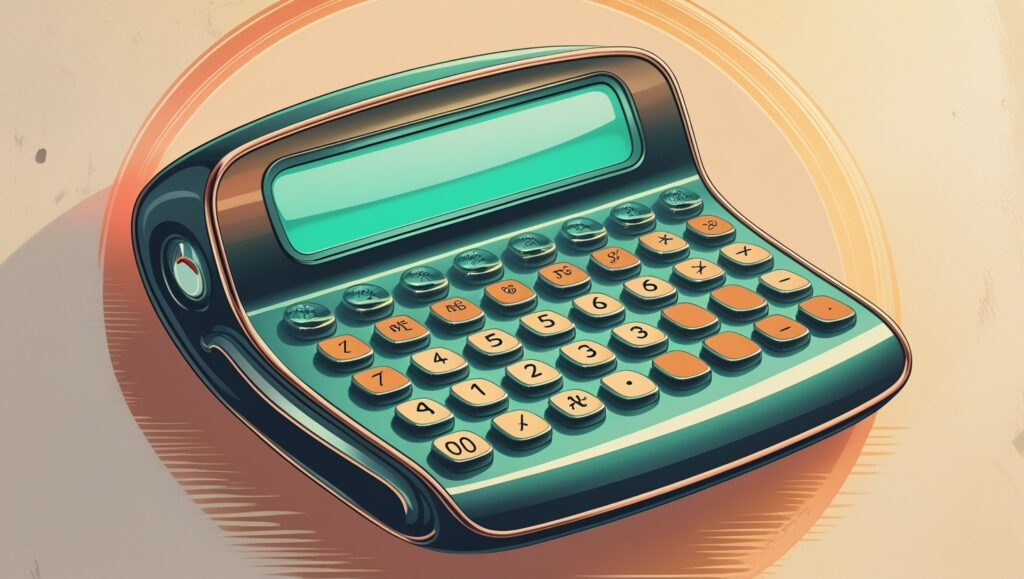
A percentage is a standard form of value that more or less everyone is aware of. In the world of trading, when someone asks “What is Pips in Forex?”, the simplest and wisest answer is- these are short percentage points using which the current prices of the various forex currency pairs are quoted.
Overview : Pips in Forex
| Core Concept | Definition & Mechanics | Practical Examples | Trading Application |
|---|---|---|---|
| Pip Fundamentals |
Standard pairs: 0.0001 (4th decimal)
Yen pairs: 0.01 (2nd decimal)
Definition: “Percentage in Point”
Purpose: Smallest measurable price move
|
EUR/USD 1.1050 → 1.1051 Result: +1 pip move USD/JPY 154.01 → 154.02 Result: +1 pip move |
Universal standard for measuring all forex price movements and quotes |
| Price Movement Impact |
20 pips: 0.20% price change
50 pips: 0.50% price change
100 pips: 1.00% price change
Impact: Seemingly small moves = significant P&L
|
EUR/USD 1.1000 → 1.1020 = +20 pips 1.1000 → 1.1050 = +50 pips 1.1000 → 1.1100 = +100 pips Each represents increasing percentage gains |
Critical for setting stop-loss and take-profit levels with proper risk-reward ratios |
| Lot Sizes & Pip Values |
Standard: 100,000 units
Mini: 10,000 units
Micro: 1,000 units
Nano: 100 units
|
EUR/USD Pip Values: Standard lot: $10.00/pip Mini lot: $1.00/pip Micro lot: $0.10/pip Nano lot: $0.01/pip |
Determines exact monetary value of each pip movement for position sizing |
| Forward Pips (Swaps) |
Definition: Forward rate vs spot rate difference
Source: Interest rate differentials
Direction: Can be positive or negative
Usage: Forward contracts & carry trades
|
3-month EUR/USD forward: Spot: 1.1000 Forward: 1.1049 Swap points: +49 pips Reflects EUR higher interest vs USD |
Affects overnight holding costs and carry trade profitability |
| Pip Value Calculation |
USD quote: (Pip size × Lot size)
USD base: (Pip size ÷ Rate) × Lot size
Cross pairs: Convert to account currency
Tools: Use pip calculators for accuracy
|
EUR/USD Mini lot: 0.0001 × 10,000 = $1.00/pip USD/JPY Standard lot @ 110.50: (0.01 ÷ 110.50) × 100,000 = $9.05/pip |
Essential for precise position sizing and risk management calculations |
| Risk Management |
Stop-loss: Set in pip terms
Risk calculation: Pips × Pip value
Account risk: Maximum 1-3% per trade
Position sizing: Risk ÷ (Pips × Pip value)
|
50-pip stop-loss scenarios: EUR/USD Mini lot: 50 × $1.00 = $50 risk EUR/USD Standard lot: 50 × $10.00 = $500 risk |
Controls maximum loss per trade and ensures consistent risk management |
What is Pips in Forex Trading: Definition and Examples
In forex trading, a pip (short for “percentage in point” or “price interest point”) is the smallest unit of price movement for a currency pair.
In practical terms, most major currency pairs (like EUR/USD or GBP/USD) use four decimal places, so a one‑pip change is 0.0001 of the quote currency. For example, if EUR/USD rises from 1.1050 to 1.1051, that 0.0001 USD increase equals 1 pip. For Japanese yen pairs (USD/JPY, etc.), which are quoted with two decimals, one pip is 0.01.
Defining pips is straightforward, but their impact can be surprising. At first glance, 0.0001 (one pip) seems tiny. Yet even these minute moves can mean big money when trading large volumes.
“A pip may look like a tiny fraction, but it’s the heartbeat of forex trading. Every gain, every loss, and every decision a trader makes hinges on understanding that small yet powerful unit.”
— Kathy Lien, Managing Director of FX Strategy at BK Asset Management, Author of Day Trading and Swing Trading the Currency Market
Examples of Pips
For example, on EUR/USD, a move of 100 pips (from 1.1000 to 1.1100) equals a 0.0100 change, which is a full 1.0% shift in the price. By contrast, 20 pips (1.1000 to 1.1020) is a 0.20% move. That illustrates why traders pay close attention to pips – even seemingly small pip changes can substantially affect profits or losses.
- 20 pips = 0.0020 move on four‑decimal pairs (e.g. EUR/USD 1.1000→1.1020 is +20 pips).
- 100 pips = 0.0100 move (1.1000→1.1100, about +1.00%).
- In yen pairs, 1 pip = 0.01 (so 20 pips in USD/JPY might be 0.20 JPY, etc.).
These examples show that 20 pips is relatively small, while 100 pips is a significant move on major pairs. Traders often use pips to set stop‑loss and take‑profit orders. For instance, a stop-loss 50 pips away means risking 0.0050 on EUR/USD. As one forex educator points out, each pip movement directly translates to profit or loss according to your position size. In short, pips quantify every tick in the market.

In other words, a pip is essentially one one‑hundredth of one percent in the exchange rate. It is important to note that pips provide a standardized way to measure tiny price moves: in effect, they are the “cents” of currency prices. Every bid‑ask spread and every profit or loss is expressed in pips, so mastering pips is fundamental for new forex traders.
- Standard pip size: 0.0001 for most pairs (one pip = 1/100 of 1%).
- Yen pairs: pip = 0.01 (e.g. USD/JPY move from 154.01 to 154.02 is 1 pip).
- Basis: Forex quotes are usually to 4 decimals (2 for JPY), so pips capture the smallest standard tick.
Pips vs Lots: How Trade Size Affects Pip Value
In forex, trades are placed in lots, which determine how much each pip is worth in currency units. A standard lot is 100,000 units of the base currency; a mini lot is 10,000; a micro lot is 1,000; and a nano lot is 100. The larger the lot, the more each pip is worth. For example, on EUR/USD:
| Lot Type | Units (EUR/USD) | 1 Pip Value (approx.) |
|---|---|---|
| Standard | 100,000 | ~$10 USD |
| Mini | 10,000 | ~$1 USD |
| Micro | 1,000 | ~$0.10 USD |
| Nano | 100 | ~$0.01 USD |
In this table (for EUR/USD with a 1 USD = 1 EUR rate), a one pip move (0.0001) on a standard lot yields about $10; on a mini lot it’s ~$1. (If USD isn’t the quote currency, the calculation adjusts slightly.) A helpful analogy is comparing pips to cents: if 1 pip is like 1 cent, then trading 1,000 dollars (1 mini lot) makes each cent (pip) worth $1. As one educational source notes, “it’s like an egg carton – a standard lot includes 100,000 eggs, and each pip is like a penny change in their price”.
- Standard lot (100k) = ~$10 per pip on EUR/USD.
- Mini lot (10k) = ~$1 per pip.
- Micro lot (1k) = ~$0.10 per pip.
The concept of lots ensures traders can control trade size and risk. With smaller lots, each pip is worth less money, allowing finer risk control. Conversely, larger lots mean each pip brings larger gains or losses. It is important to note that pip value is different for each currency pair and depends on both the lot size and the currencies involved. Many brokers and platforms automatically calculate pip value based on your trade volume.
“New traders often overlook pips, thinking they’re too basic. But mastering pips is like learning the alphabet before writing a novel—skip it, and the language of trading remains unreadable.”
— John Kicklighter, Chief Strategist at DailyFX and Forex.com, Chartered Market Technician (CMT)
Forward Pips (Swap Points) in Forex
Apart from spot trades, forex markets also have forward contracts. In forwards, the term forward pips (also called swap points) is used. Forward pips represent the difference between the forward exchange rate and the spot rate. Essentially, they arise from interest rate differentials between the two currencies. As one trading guide explains, “Swap Points (forward pips) are the difference in interest rates between transaction currencies”. In practice, dealers quote forwards in pips above or below spot. For example, if the 3‑month EUR/USD forward is 0.0049 higher than the spot price, that is quoted as 49 forward pips.
- Forward pips (swap points): Reflect how far forward rates are from spot, due to interest differences.
- They can be positive or negative. Buying a high‑yield currency forward typically yields positive forward points; selling it may incur negative points.
Forward pips matter for businesses and banks planning future currency needs. They are typically much smaller than one percent (often a few pips for short maturities), but they capture important cost-of-carry effects. For new traders, it is enough to know that forward points are quoted in pips and relate to the cost (or gain) of holding a currency position over time.
Calculating Pip Value and Using Pip Calculators
Knowing how to calculate pip value is vital for risk management. In general, for a USD‑quoted pair like EUR/USD, the formula is: Pip Value = (0.0001 / Exchange Rate) × Lot Size when USD is base, or simply 0.0001×Lot Size when USD is quote. For example, on EUR/USD at 1.0801, a 10,000‑unit mini lot yields $1 per pip (0.0001×10,000), so a 10‑pip gain is $10. On USD/JPY at 110.50, a 100,000 lot has pip value = (0.01/110.50)×100,000 ≈ $9.05 per pip.

Instead of manual math, traders often use pip calculators – tools provided by brokers or trading websites. A pip calculator asks for the currency pair, trade size (lots), and account currency, then instantly shows the dollar value per pip. This is extremely useful, especially for cross-currency pairs where converting pip value to your account currency is needed. Many firms like FXTM, FOREX.com, and Myfxbook offer free online pip calculators. Using a pip calculator saves time and prevents errors. It is another way that experience is encoded into trading tools: even top pros rely on precise pip calculations to size trades.
It is interesting to note that every trading platform or trading chart refers to pips in the same way. If the market price shifts by one pip, your profit/loss will change by exactly (Lot Size × Pip Value). Accordingly, understanding pip calculation underpins solid position sizing. For example, if risking 50 pips on EUR/USD, and each pip is $1 (mini lot), the trade risk is $50. Change to a standard lot (pip ≈$10) and the risk becomes $500 for 50 pips. Effective traders always calculate their pip risk before entering a trade.
Practical Tips and Summary
For a new forex trader, mastering pips means understanding currency quotes at a granular level. Keep these key ideas in mind:
- Pips are tiny units: They measure the smallest customary move in a forex quote (0.0001 for most, 0.01 for yen pairs).
- All spreads and prices use pips: The bid‑ask spread is quoted in pips, so even a few pips difference affects cost.
- Pip value depends on lots: More lots = more dollars per pip. Use tables or calculators to know your exact pip value.
- Manage risk in pips: Set stop-loss and take-profit in pip terms. Always translate that into actual money risk (e.g. 2% of account).
Also remember the jargon: sometimes “pips” are contrasted with pipettes (fractional pips, one tenth of a pip) when brokers quote five decimals. However, the core meaning of pip is the same.
Conclusion
Conclusively, a pip is a fundamental building block of forex trading. New traders should practice thinking in pips when they look at price charts. Over time, counting pips becomes second nature—just like knowing cents in a dollar. By using pip calculators and trading demos, one can reinforce this knowledge. As has been discussed earlier in the article, understanding how pips relate to lots, account currency, and forward rates will greatly improve trade planning. With this foundation, a trader can better gauge risk and interpret market moves. The next step is to try applying these concepts in a demo account or by using pip calculators on real-time quotes. Stay curious, trade carefully, and keep learning.
FAQs
What is the meaning of pips in forex trading?
A pip in forex trading stands for “percentage in point” and represents the smallest standard price move in a currency pair. For most pairs, one pip equals 0.0001; for yen-based pairs, it equals 0.01. Pips are used to measure price movements, spreads, and profit/loss.
What is 100 pips in forex?
100 pips refers to a price movement of 0.0100 in most currency pairs quoted to four decimal places (e.g., EUR/USD moving from 1.1000 to 1.1100). Depending on the trade size, 100 pips can equate to significant profit or loss—typically $100 on a mini lot and $1,000 on a standard lot.
What is 20 pips in forex?
20 pips is a price change of 0.0020 in a four-decimal currency pair. For example, if GBP/USD rises from 1.3000 to 1.3020, that is a 20-pip increase. The monetary value of 20 pips depends on the trade size and currency pair involved.
What is pips and lots in forex?
Pips measure price movement, while lots determine trade size. A standard lot equals 100,000 units of currency, and each pip in such a trade is worth approximately $10. Smaller lots (mini, micro, nano) reduce the pip value and allow more precise risk management.
What is forward pips in forex trading?
Forward pips, also known as swap points, represent the interest rate differential between two currencies in a forward contract. They indicate how much the forward exchange rate differs from the spot rate and are typically added or subtracted from the spot quote.
What is the value of a pip in forex?
The value of a pip varies depending on the currency pair, trade size (lot), and account currency. On a standard lot in EUR/USD, one pip is typically worth $10. Traders can use a pip calculator to determine exact values for each trade.
What is a pip calculator and how does it work?
A pip calculator is an online tool that helps traders determine the monetary value of a single pip based on the currency pair, lot size, and account denomination. It automates complex calculations and improves trade accuracy and risk assessment.
Is understanding pips essential for new forex traders?
Yes. Pips are the core unit of measure in forex trading. Understanding them is vital for calculating potential gains/losses, setting risk parameters, using stop-loss orders, and planning trades effectively. Mastery of pips is foundational for successful forex trading.

















